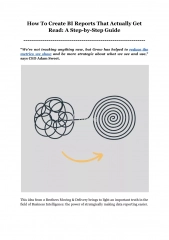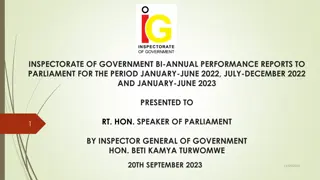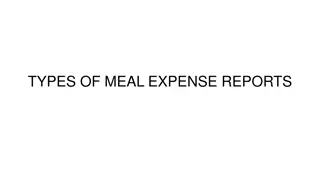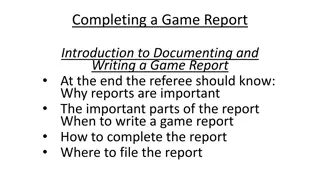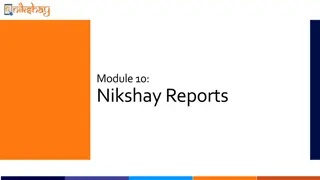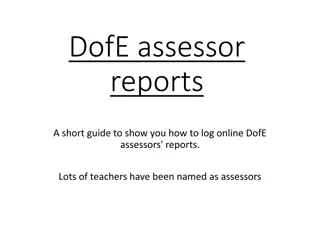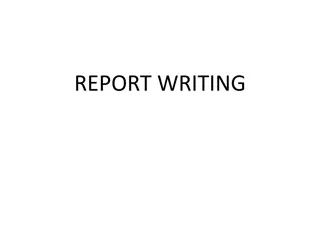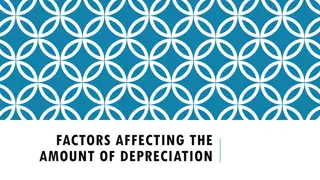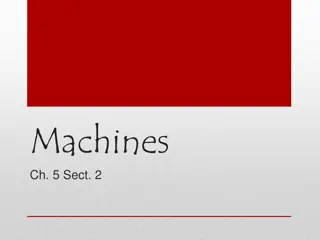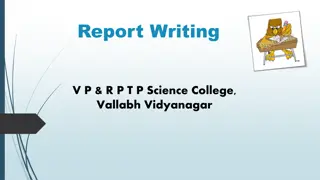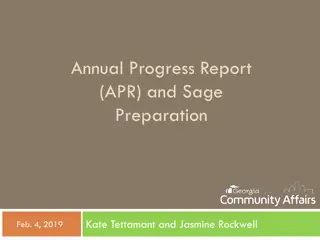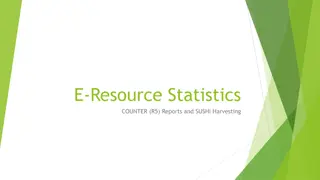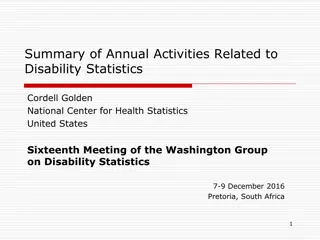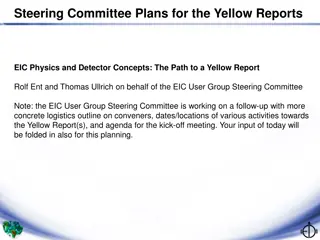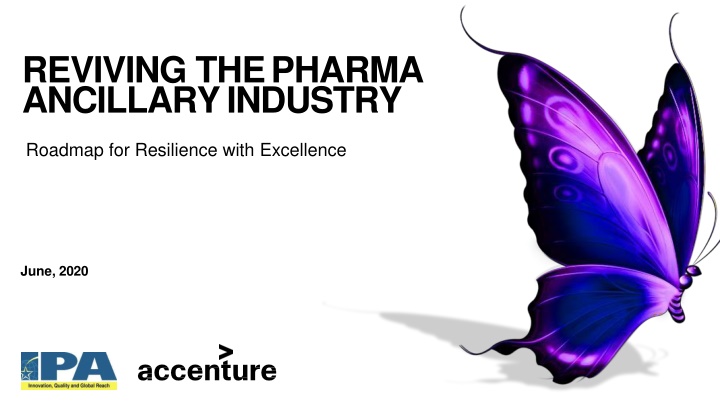
Roadmap for Resilience in the Pharma Ancillary Industry
Discover the challenges faced by the Pharma Ancillary Industry and proposed recommendations for recovery and resilience in the face of disruptions caused by the COVID-19 pandemic. Explore strategies to accelerate recovery and build resilience for long-term success in this critical sector.
Download Presentation

Please find below an Image/Link to download the presentation.
The content on the website is provided AS IS for your information and personal use only. It may not be sold, licensed, or shared on other websites without obtaining consent from the author. If you encounter any issues during the download, it is possible that the publisher has removed the file from their server.
You are allowed to download the files provided on this website for personal or commercial use, subject to the condition that they are used lawfully. All files are the property of their respective owners.
The content on the website is provided AS IS for your information and personal use only. It may not be sold, licensed, or shared on other websites without obtaining consent from the author.
E N D
Presentation Transcript
REVIVING THEPHARMA ANCILLARYINDUSTRY Roadmap for Resilience with Excellence June, 2020
EXECUTIVE SUMMARY (1/2) The success of ~$41 Bn Pharma industry is driven by a network of Ancillary Partnerships The pharma industry is a jewel in India s crown with long term growth opportunities The ~$9 Bn ancillary industry is a key contributor to the success of pharma industry. . Key Level 1 ancillaries include API/KSMs, Packaging (Plastic, Aluminum, Glass) and Excipients and Chemicals. MSMEs have salience of ~55-60% within ancillaries, contributed by ~10,000 11,000units Ancillaries have faced significant disruption due to a variety of factors during lockdown Restricted movement and fear for safety has resulted in constraints in manpoweravailability Movement constraints have been caused by lack of public transport and unclear communication to ground authorities leading to employees beingdenied passage.Afraction of the workforce is also unwilling to resume work citing fear of infection and pressure from families Impacted surface and seas transports have led to logistics disruptions Low availability of trucks and truckers due to absenteeism, refusal for carrying part load, issues with transport permits for interstate movement and clogged sea ports have resulted in disrupted surface and seatransport Raw Material shortage caused by operating constraints, absence of operating permits and lack of sufficient orders has relatively been less disruptive than manpower and logistics, however the situation may worsen in the future once the inventories servicing current requirements runout Stretched working capital cycles and increased input costs are creating financial distress for smallerplayers Reduced inventory turnover and payable days along with stretched receivables is creating a strain on the workingcapital An overall cost impact of 9% - 11% anticipated for all ancillary players, with smaller players facing severe financialdistress At an overall level, Baddi and Vapiclusters have been more adversely impacted due the challenges posed by lockdown Disruptions in third party services as well as delivery pressure from customers have been sporadic challenges acrossancillaries The road ahead is fraught with risks While challenges like surface logistics and RM shortages are getting resolved with lockdown relaxations, areas like manpower availability (due to permitted movement of migrant labor), clogged sea-ports and financial distress (especially for MSMEs) require urgentaction Epidemiology suggests that a recurrence of Covid-19 is imminent. However, key questions vis- -vis disaster management like definition of essential goods, clear communication to ground authorities and communication to alleviate public fear remainunanswered Further, the COVID crisis and its implications have amplified structural risks for the industry - single source dependence for imports and increased costs to comply with new ways of working 2
EXECUTIVE SUMMARY (2/2) Concerted efforts across Govt, large pharma ,ancillaries and IPA necessary for revival We propose six recommendations to ensure the ancillary industry recovers rapidly and is emerges resilient and stronger than ever thus securing long term success for the industry ACCELERATE RECOVERY for business continuity (next 3 months) Government to deliver financial relief to the MSME ancillaries While the Govt, had announced relief measures for MSMEs in form of INR 3 Lakh Crores collateral-free automatic loans for MSMEs, they will have to ensure effective disbursal of the proposed intervention. Additional relief on electricity costs and wage support packages and moratoriums on statutory payments like ESI, PF and gratuity will improve the financial situation of MSMEs Ancillaries to create and implement protocols for worker safety to convince the workforce and ensure safe return to work Guidelines from the govt. on pre-emptive safety protocols and measures along with awareness of insurance schemes and COVID treatment centers would go a long way in bolstering this effort 1 2 BUILD RESILIENCE for preparedness in case of recurrence (next 6 months) A robust disaster managementmechanism A COVID control tower, driven by IPA and supported by industry and Government stakeholders) will be at the nerve center supported by thebusiness continuity toolkit - these will play a pivotal role in influencing and managing communications acrossstakeholders A cross-industry collaboration platform , led by large Indian Pharma manufacturers will drive greater visibility in the ancillary value chain to proactively identify supply risks 3 4 INVOKE RENAISSANCE to emerge stronger (next 1-2 years) Reducing reliance on imports from a single geography to manage supply disruptions This will require the govt. to identify strategic APIs to for indigenous manufacturing and facilitate execution of this plan through inducing clusters by early approvals, set-up of common utilities, lowered borrowing costs and research based linkages to continuouslyinnovate Mentorship / knowledge sharing , facilitated by IPA and pharma companies, will enable ancillary competitiveness through access to frugal innovation, sourcing assistance, better payment terms and persuading pharma companies to accept pricehikes 5 6 3
CONTENTS 01 OBJECTIVES AND METHODOLOGY 02 SETTING THE CONTEXT 03 CHALLENGES FACED BY ANCILLARYPLAYERS 04 RECOMMENDATIONS 4
REPORT OBJECTIVES Current situation: COVID-19 presents itself as an unprecedented event resulting in several new challenges plaguing the pharmaceutical supply chain. The crisis highlights the cascading effects of ancillaries on the overall functioning of the pharmaceutical ecosystem. These challenges are further compounded by the limited visibility industry stakeholders have intoancillaries. IPA-Accenture initiative: IPA and Accenture recognized that urgent action is required to support the ancillaries and therefore collaborated to identify interventions that will enable business recovery. The methodology for identifying these interventions is interactive - through IPA s and CRISIL s facilitation, Accenture has conducted several interviews across large Indian pharma manufacturers, pharma ancillaries and industry SMEs to develop a holisticperspective. Outcome: This report focuses on understanding the root causes of the challenges and possible recommendations across the time horizon: Execution focused interventions - To navigate the current situation and help ancillaries get back on their feet in the short term while minimizing the impact on bottomline Policy level recommendations Ideation of long-term interventions to help the business stabilize over time, sustain their performance and succeed in the newnormal We believe that concerted efforts across pharma and ancillaries, government and the IPA will be necessary to implement the recommendations. This document will help in expediting the action by bringing all industry stakeholders on the same page while also furthering the policy agenda of the ancillary industry. 5
WE FOLLOWED A MULTI-PRONGEDMETHODOLOGY, INCLUDING PRIMARY INTERACTIONS ACROSSANCILLARY PLAYERS, FOR OUR ANALYSIS AND RECOMMENDATIONS We interacted with 103ancillary players across the industry sub- segments PRIMARY RESEARCH Interviews across clusters and industry segments for ground level insights Baddi 3 6 1 Sikkim Delhi-NCR 7 1 2 Ahmedabad & Vadodara SECONDARY RESEARCH Augment primary research inputson evolving industry scenario and challenges faced 3 11 5 2 Vapi-Valsad 4 1 2 19 Vizag 6 1 4 9 Mumbai-Pune Legend: 4 7 2 Hyderabad API & KSM Excipients & other chemicals Packaging Engg Services, Utilities,Testing BEST PRACTICES Leverage learnings from other countries and state governments around crisis management and industrysupport 1 2 Chennai 6
THE ~$41 BN PHARMA INDUSTRY IS A JEWEL ININDIAS CROWN Long term growth opportunity Pharmacy of the world ~22% share of the global generics market, largest in the world ~550 US FDA approved plants (maximum outside the US) 50% of global demand fulfilled for vaccines Possibility to increase value share India accounts for 10% of global production by volume, but 1.5% by value Potential to switch from generics to higher margin licensed drugs One of the lowest prices in the world Indians pay 70% less than the global median to buy medicines One of the lowest manufacturing costs (almost 50% of Europe) Provision of access to affordable treatment (e.g. anti-retrovirals in Africa) to people / Governments who have an affordability challenge Strategic shifts in pharma supply chain There is a strong global push to de-risk pharma supply chains and reduce dependence on China Rising wages and anti-pollution drive have eroded China s once-overwhelming cost advantage Pivotal role in the global COVID crisis Quick production ramp-up of potential COVID drugs e.g. Favipiravir (Fujifilm Toyama Chemical), Remdesivir (Gilead) Supplying COVID support drugs to the world e.g. HCQ Tablets to 108 nations, $5.4 billion worth of Paracetamol Govt. promotes manufacturing $182 Mn incentive by Govt. to promote manufacturing of 53 critical KSMs & APIs $455 Mn financial assistance to Telangana Govt s proposed pharma city Note: Market share numbers are as of2019 Source: IBEF,IPA Reports, Medbelle Reports, Make in India and AccentureResearch 8
THE SUCCESS OF PHARMA INDUSTRY HAS BEEN DRIVEN THROUGH A NETWORK OF ANCILLARYPARTNERSHIPS Non-Exhaustive KSM2 Petrochemicals Solvents API1 Catalysts Plant Starch Other Chemicals Formulation Wood Pulp Whey Petrochemicals Glucose/Fructose Wood Pulp Petrochemicals CrudeOil Binders/Fillers Disintegrants PlantBased Excipients End Product for Patient Colors and Flavors Sweetener/Preservative Animal Based AL: Foil/Tube/ BaseFoil Aluminum Sheets Raw Material Metals Plastic: Bottle/Blister/Tube PE3/PVC4/Film Glass: Vial/Ampule/Bottle Silica Packaging Printing Minerals Pigment Ink/Cylinders/Die & Punch Accompaniment Inserts/Labels/Boxes Paper/Board Ancillaries Transport, Utilities, Technical, Refrigeration and EngineeringServices 1 Active Pharmaceutical Ingredient | 2 Key Starting Material | 3 Polyethylene | 4 - Polyvinylchloride Source: Accenture Research and IndustryReports 9
MSME PLAYERS HAVE SIGNIFICANT SALIENCE IN THE ~$9 BN ANCILLARY INDUSTRY Comprises of excipient, chemical and solvent companies Large manufactures supply to a variety of industries Includes plastic, paper, aluminum and glass packaging Primary, secondary and tertiary packaging considered ~$9 Bn Significant % of KSMs are imported from China (70%) 15-20% of API productionis captive to large Indian pharma manufacturers ~$1.5 Bn ~30-35% ~$2 Bn ~65-70% ~35-40% ~40-45% ~$5.5Bn ~60-65% ~45-50% ~55-60% ~50-55% API Packaging # 4,500 4,800 Excipients # 2,500 2,800 Total # 3,000 3,400 # 10,000 11,000 MSME Salience | | # - No. of MSME Units $Bn - MarketSize Note: MSME is defined as companies with annual revenue <100 Cr Source: Accenture Research, Pharmexcil, IBEF,CRISIL and IndustryReports | Large ancillary salience 10
ACROSS CLUSTERS, THE COVID PANDEMIC HAS LED TO WIDESPREAD DISRUPTIONS IN THE ANCILLARYINDUSTRY Challenges faced by ancillaries ManpowerAvailability Baddi Sikkim LogisticsDisruptions Raw Material Shortage Ahmedabad & Vadodara Vapi-Valsad FinancialDistress Vizag Mumbai Hyderabad Disruption in 3rd PartyServices Legend: Moderate DisruptioHnigh Disruption Delivery Pressure from Customers Source: Accenture Research andCRISIL 11
CHALLENGES FACED BY ANCILLARIES
A MULTITUDE OF FACTORS HAVE BEEN RESPONSIBLE FOR THE DISRUPTION CAUSED BY COVID-19 LOCKDOWN What are the current challenges faced by your company? Impact on movement and fear for safety iscausing labor shortage across blue collar, white collarand Manpower Availability 70% 3rd party workforce Challenges around availability, permissions and load adherence for fleets and cloggedsea-ports have resulted in majordisruptions Logistics Disruptions 65% Constrained operations of startingmaterial suppliers has impacted supplies. Inventoriesare helping manage the currentshortfall Raw Material Shortage 58% Impact on inventory turnover,payable days, receivables & increased input costsare creating financial distress specially for smallerplayers FinancialDistress 50% Disruption in3rd Party Services Challenges around 3rd party services like engineering and courier services werelimited 22% Delivery Pressure from Customers Pharma companies have been cooperative incase of stretched deliverytimelines 9% % Repondents saying 'Yes' Note: Respondents could choose more than one factor Source: PrimaryInterviews 13
EACH OF THESE CHALLENGES ARE DRIVEN BY MULTIPLE FACTORS WITH SOME INDUSTRIES AND CLUSTERS SHOWING A HIGHER IMPACT Manpower Availability Disruptions Logistics Raw Material Shortage Financial Distress Restricted movement due to lack of public transport and unclear communication to ground authorities, alongwith fear for safety has resulted in constrained manpower availability Issues with truck and trucker availability due to high absenteeism, FTL1 adherence for material delivery, and not receiving transport permissions are disrupting surfacetransport The RM vendors of the ancillary companies havebeen impacted by operating constraints, absence of operating permits and lack of sufficient orders, leading toRM shortages. However, current requirements are being managed throughinventory Reduced inventory turnover and payables along with stretched receivables haveled to a high working capital burden on ancillaries Smaller players are currently more vulnerable to this burden, given that their working capital cycles were already stretched even before the lockdown Clogged sea ports due to limited availability of workforce are causing delays inshipment delivery While packagingcompanies are impacted due to low automation, API players are constrained by their dependence on skilledlabor The situation might worsenin the future once as inventory levels deplete With a low degree of co- location with customers, API players are more adversely affected due to logistics constraints while packaging companies are able tomanage well To add to working capital woes, lower utilizations coupled with higher cost base are expected to cause severe financial distress for MSMEs Critical starting materialswhich are industry agnostic are likely to become bottlenecks if production does not startsoon Clusters like Baddi & Daman with greater need forinterstate movement are facing higher manpower shortage 1 Full TruckLoad Source: Primary Interviews and AccentureResearch 14
WHILE SOME CHALLENGES ARE GETTING RESOLVED WITH LOCKDOWN RELAXATIONS, CERTAIN ASPECTS REQUIRE URGENT ACTION Local labor availability will improve. However migrant labor shortage is likely in select clusters as respective State Governments facilitate their return Manpower Availability With lockdown relaxations, interstate movement and truck availability is improving. However, unclogging of sea ports is likely to take longer to resolve owing to workforce constraints Logistics Disruptions Supplies are improving as increasing number of suppliers re-start operations. However, there might be a momentary dip due to inventory run-outs and high supply lead times RM Shortage Working capital benefits proposed by the govt. might get offset due to higher input costs & low utilization. An effective mechanismto ensure benefit disbursal to MSMEs is required Financial Distress Positive near term outlook Source: Primary Interviews and AccentureResearch Moderate near termoutlook Negative near termoutlook 15
EPIDEMIOLOGY SUGGESTS THAT A RECURRENCE OFCOVID- 19 IS IMMINENT Easing of travel restrictions - Asymptomatic patients infectinghealthy population Lockdown ineffective in building Herd Immunity - For herd immunity to kick in ~55% of the population would need to be infected (estimates) Emergence of Super Spreaders - Densely populated areas with lackof social distancing measures would become hot beds forCOVID 15thMay ~4,000new cases daily Containmentmeasures successful in curbing transmission Social distancing norms being adhered to in public places COVID Cases Decline of COVID Resurgence of COVID 30thJanuary 25thMarch 12thMay Lockdown 4.0 withrelaxation Lockdown opens up India reports it s Nationwide first case lockdown Likely recurrence of COVID in Wuhan After a 35-day streak of no cases, 6 new cases of COVID were reported from a residential compound sparking fears of a second wave, leading to the government mandating testing for all residents of Wuhan Current Scenario Source: Accenture Research PotentialFuture 16
HOWEVER, KEY QUESTIONS PERTAINING TO UNDERLYING CAUSES OF THE CHALLENGES REMAIN UNANSWERED CHALLENGES FACED BY ANCILLARY PLAYERS UNDERLYING CAUSES & UNANSWERED QUESTIONS Operating Constraints No operating permits How essential comprehensively defined in a way to ensure permission from Day 1 ? do we ensure that the goods are operating Definition ofEssential Goods Lack of sufficient orders How will the govt. ensure that communication authorities leaves no room for ambiguity ? Restricted movement of manpower to ground Loss in Translation Transport permissions Whom do companies reach out to for resolving issued related to permissions & stoppages? Operating Constraints No route of escalation Within the people in authority, who is responsible for reaching out to the masses to give them the confidence that it is safe to travel to work? Fear for safety Depleted labor pool Lack of communication to alleviate publicfear Trucker availability Clogged sea ports Source: AccentureResearch 17
FURTHER, THE COVID CRISIS AND ITS IMPLICATIONS HAVE AMPLIFIED CERTAIN STRUCTURAL RISKS FOR THE PHARMA INDUSTRY Risks Triggers DEPENDENCE ON IMPORTS FROMA SINGLE GEOGRAPHY The pharma ancillary supplies for both API/ KSMs (~70%) and capital equipment significant dependence on China. Hence, supply chain disruptions could have beenworse. When such a scenario recurs, we would once again underprepared to deal with it since this challenge has not beenresolved (~50%) have be significantly INCREASED COSTS TO COMPLY WITH NEW WAYS OF WORKING With new ways of working, companies will have to adapt to operating with social distancing and reduced manpower to ensure safety. This will result in the players incurring additionalcosts There productivity and cost structures of MSMEs amongst ancillaries, which will impact the industrycompetitiveness will be a severe impact on Source: Primary Interviews and AccentureResearch 18
WE PROPOSE SIX RECOMMENDATIONS TO ENSURE THAT THE INDUSTRY RECOVERS RAPIDLY AND EMERGES STRONGER THAN EVER accelerate RECOVERY build invoke RESILIENCE RENAISSANCE Next 3 months* Next 6 months* Next 1-2 years* Deliver financial relief toancillaries Develop robust disaster managementcapabilities Reduce reliance on imports froma single source 1 3 5 Create an ecosystem to promote trust and transparency among all industry players Ensure competitiveness of ancillaries in the newnormal Enable safe return ofworkforce 2 4 6 * Indication of the time by which these recommendations should be implementedcompletely 20
1 THE CENTRAL GOVERNMENT HAS ANNOUNCED RELIEF PACKAGES FOR MSMEs WHICH IS LIKELY TO EASE THEIR FINANCIAL DISTRESS The Indian Government has announced the provision of a fiscal relief package for MSMEs Support on working capital extension and relief on other costs can also ease the distress 3 Lakh Crores collateral - free automatic loans forMSMEs The government has extended an emergency collateral-free credit line of up to 20% of their outstanding credit (as of February 29) to MSMEs with loans of up to Rs 25 crore outstanding and turnover of up to Rs 100 crore The loans will have a 4-year tenure with 12 months moratorium on principal repayment. Interest is to becapped 100% credit guarantee cover to banks and NBFCs on principal and interest which should enhance the flow of funds from banks to NBFCs to MSMEs and help alleviate near-term liquidity pressures 20,000 Cr subordinate debt for stressedMSMEs 50,000 Cr equity infusion for MSMEs through fund offunds However, the Govt. needs to ensure that there is a mechanismin place for effective disbursal of the proposed interventions & availability of loans to smaller units in the MSMEspace Provide tax subsidies along with refund policies & reduction inGST Administer relief on electricity bills up to 10% on the fixed expenses for a period of 6 months, thus allowing companies to pay only basis consumption Provide direct wage support / subsidy package or extend loan support for paying wages for the next 3-6 months at a concessional rate of interest Announce moratorium on all statutory payments such as ESI, PF and gratuity payments for the next 6 months to all MSMEs up to a pre-defined turnover limit. (Under PMGKY, the current threshold for giving relief (up to 100 employees and 90% employees with < 15000 monthly wage) can also be relaxed as entities in API/KSM industries are marginally overshooting these limits). Ownership: Government Source: Primary Interviews and AccentureResearch 21
2 PROVIDING ASSURANCE TO MIGRANT WORKERSAND IMPLEMENTING WORKER SAFETY PROTOCOLS IS ESSENTIAL TO ENSURE A SECURE RETURN TOWORK Conviction in safety measures can be established through: 1. Robust SOPs for disinfection and quick resumption ofoperations 2. Use of technology to monitor employee and workplace safetyand compliance safe distancing and contacttracing Need to communicate with, and convince migrant labor to return Employers and government have to work in tandem in order to assuage concerns on: Safety of life: Checks and balances for personal safety Safety of employment: Guarantee & security of employment on work resumption Ancillary manufacturers need guidelines on pre-emptive implementation support from authorities To assuage the concerns around medical treatment, access to health insurance necessary. Ayushman Bharat, which covers COVID testing and treatment under their umbrella, will be an ideal instrument. If required, some criteria in relation to individuals who are not entitled to avail of the scheme can be relaxed by the Government as a one-time dispensation PROTECT& COMPLY Employee tracking along with ensuring social distancing, safety atentry points and canteen / breakout areas iii to be measures given clear with PREPARE WORKPLACE Create layout based zoning and identification of workplace elements to create factory level identifiers ii schemes may be PLAN YOUR WORKFORCE i Leverage existing HR data to create an Essential StaffingAdvisor Ownership: Support: Ancillaries Government Source: Primary Interviews and AccentureResearch 22
3 A ROBUST DISASTER MANAGEMENT CAPABILITY WILL LEVERAGE LEARNINGS FROM PAST DISRUPTIONS WITH A CONTROL TOWER AT THE NERVE CENTRE ONE IN EACH CLUSTER Business continuity toolkit Precise flow of information Central Government List of essentialindustries COVID 19 Control Room Rapid response SOPs in case of infectiondetection State Government Role matrix of key stakeholders and responsibility Local Administration COVID Control Room will ensure that on ground issues are effectively resolved and risks are proactivelyidentified and mitigated A comprehensive view of the ancillary network Large Ancillary Manufacturers People Manufacturers Ownership: Support: Large IndianPharma Ancillaries IPA Government Ministries / Departments Source: Primary Interviews and AccentureResearch 23
4 A CROSS-INDUSTRY COLLABORATION PLATFORM WILLDRIVE GREATER VISIBILITY IN THE ANCILLARY VALUE CHAIN TO PROACTIVELY IDENTIFY SUPPLY RISKS Collaboration and RiskManagement Transparency resulting from regular exchange of information hasmany advantages for across the valuechain QUALITYAGREEMENTS Ancillary 1 Plant #4 Ancillary 4 Plant #2 Inventory & Mfg. Visibility CrossEnterprise Processes Supply Chain Map Knowledge sharing creates a climate of trust between players in the chain DATA INTEGRITY ECOSYSTEMS ESTABLISH PHARMA COS Collaboration ASSURED RiskDashboard Real-time control and monitoring helps identify potential threats and resolve them before the impact Risk Mitigation Plans SingleScalable Platform Control overQuality Processes Ancillary 2 Plant #1 Ancillary 3 Plant #7 Risk SUPPLY AGREEMENTS Management Ownership: Support: Large Indian Pharma IPA Ancillaries Source: AccentureResearch 24
5 REDUCING RELIANCE ON IMPORTS FROM ASINGLE GEOGRAPHY WILL HELP MANAGE SUPPLYDISRUPTIONS For strategic APIs, Govt. could provide plug-and-play infrastructural support in dedicated zones Planning Identifying strategic APIs for local sourcing, whichare: APIs with future potential- to provide future scale ofproduction APIs where India has strong development and manufacturing skills Identify large dedicated clusters for operating manufacturing plants such clusters could be situated next to ports,KSMs Execution Extending pre-approval of environmental clearance and easing other regulatory clearances (like simplifying the license renewalprocess) Setting up common utilities such as solvent recovery and distillation plants, power and steam units, effluent treatment plants, etc., to make smaller units economically viable in these zones Lowering costs of borrowing to set up a plant in these API hubs/SEZs through tie-ups with multilateral financingagencies Embedding strong research based linkages to continuously innovate to improve process technologies (e.g., yieldimprovement) CHINESE GOVERNMENT S INITIATIVES TO DRIVE API GROWTH Lower borrowing costs 5%-7% Lower labor & electricity costs 11 US cents/kwh Lower logistics costs 1% of expenses Clusters in the close proximity of starting materials E.g. Petrochemicals 15% y-o-y growth of industry 5x increase in API manufacturers in 5 years Multiple sources for capital equipment: Look beyond China at countries like South Korea, Malaysia and Taiwan to develop alternate suppliers Ownership: Support: Government Ancillaries Source: IPA Report and AccentureResearch 25
6 MENTORSHIP/KNOWLEDGE SHARING WILL ENABLE ANCILLARY COMPETITIVENESS Industry bodies and Large Indian Pharma companies can come together to support ancillary manufacturers Access to frugal innovation Help MSMEs access innovative ecosystem players with solutions in the space of safeoperations Support innovation in a viable manner through demand aggregation Sourcing assistance - Aggregate demand across ancillary manufacturersof a similar kind and negotiate better with the source MENTORSHIP Better payment terms Ensure that payments terms across the chain are improved to enable efficient payments cycles and sufficient flow of working capital Price increase Persuade pharma companies to accept price hikes wherever required factor inputs justify thesame COMMERCIAL ACUMEN Ownership: Support: Large Indian Pharma Ancillaries IPA Source: Primary Interviews and AccentureResearch 26
OVERALL, CONCERTED EFFORTS ACROSS PHARMAAND ANCILLARIES, GOVERNMENT AND THE IPA WILL BE NECESSARY TO IMPLEMENT THE RECOMMENDATIONS Government IPA Large IndianPharma Ancillaries Deliver financial reliefto ancillaries 1 Enable safe return ofworkforce 2 Develop robust disaster managementcapabilities 3 Create an ecosystem to promote trust &transparency among all industryplayers 4 Reduce reliance on importsfrom a single source 5 Ensure competitiveness of ancillaries in the newnormal 6 Ownership Support 27
CONTACTS RISHABH BINDLISH AMIT MISRA SeniorPrincipal Life Sciences Managing Director India Life Sciences & GlobalGenerics Lead rishabh.bindlish@accenture.com amit.z.misra@accenture.com
APPENDIX 1 - LIST OF RELEVANT ANCILLARIES CLASSIFIED AS ESSENTIAL MANUFACTURING RELATED RELATED SUPPLYCHAIN SUPPORTING INDUSTRIES API ManufacturingUnits Glass Bottle making plants Suppliers of Chemicals, industrial gases, diluentsor fillers, binders or adhesives, disintegrants, lubricants, glidant Raw Material Suppliers (KSM, Solvent, colors, flavors, coating materials andexcipients) All packing materials viz, foils both plain & printed; cartons, DFC boxes, fiber drums,HDPE DRUMS, stereo and ink for the same, printedlabel etc. Plastic & Flexible packagingUnits Aluminum Foil and caps manufacturing Units Laboratory chemicals and equipment suchcolumn etc. required for QC testing Machine Fabrication and Maintenance Services; Spares Service Provider 10. Technical service providers for Qualification, Validation, etc. 11. Effluent Treatment Services Provider; Hazardous Waste disposal 12. PVC fills and Plastic bottles PET andPPHDPE 13. Briquette 14. Safety Equipment suppliers 15. Ancillary units like recovered solvent recyclers 16. Industry scrap dealers, processers Source: IPA and AccentureResearch 1. 2. 3. 1. Printing units for pharma inputs; Label printing units Ancillary units for printing industry like plate makes, etc. Private Pharma Testing Labs (in Hyderabad) who specialize in critical testing Thermocol box manufacturing units &Ice Gel pack units required for cold chain products. TruckAgencies Paper and Cardboard manufacturing units for packaging Transport services for inbound RM/PMand outbound FinishedGoods Carriage and Forwarding Agent(CFA) operations Temperature and Refrigeration equipment& services 1. Transport Companies ( for carryingworkers to Plants and back ) Service providers of Boilers, Compressors, Stability Chambers Service providers of Calibration of Instruments, HPLC & GCColumns Service providers of clean room equipment Courier Services 2. 2. 3. 3. 4. 4. 4. 5. 5. 5. 6. 6. 7. 8. 7. 8. 9. 9. 29
APPENDIX 2 - SWIFT ACTION COUPLED WITH FINANCIAL SUPPORT WERE KEY TO EARLY RECOVERY OF CHINA S INDUSTRY Govt pushed industries to operate and meet the requirements; industries were unwilling due to manpowerissues Price Increase Increase in cargo charges and input raw material cost by5-10% Challenges Exports Air shipments were a major challenge while sea shipments werestreamlined Key pharmaceutical activities such as site inspections/certifications halted Fiscal policy and flexible monetary policy for supporting companies to raise money and get loans Polices to help SMBs1, such as halving VAT, allowing the SMBs exemption from, reduction in or deferral of payment of social insurance, tax refund policy, etc. Reduced interest rates from 4.5% to 1.5%, offered subsidized loans to SMEs, postponed principal and interest loan repayment from Jan 25 to June 30, 2020 Govt. support to be able to defer and reduce essential costs like trimming electricity charges by 5% Arranged chartered transport and offered allowances to bring migrant workers from provinces with surplus Subsidized pickup and drop off of migrants Waived health insurance cost Instituted flexible work hours Key Interventions Manpower Natural advantage due to presence of large cluster areas leading to high co-location with suppliers Transport system well-organized andpredictable Logistics Financial Support Coordinated local raw material and accessory resources for supply channels Promoted cross-city collaboration as needed RM Recovery of industries(as on Marchlast week): 99% work resumption rate for large enterprises outside Hubei (95% inHubei) 92% work resumption rate for all government-ownedfirms 77% Work resumption rate for small and medium enterprises outside Hubei 1 Small and Medium Sized Businesses Source: Primary Interviews and AccentureResearch 30
APPENDIX 3 - LIST OF REFERENCES FOR SECONDARY RESEARCH Industry Facts and Figures COVID Epidemiology Trends World Health Organization World Economic Forum News Reports (Wall Street Journal and Forbes) National Institute of Allergy and Infectious Diseases IBEF Make In India Department of MSME IQVIA GBRE Medbelle Research IPA CRISIL Invest India The Economist News Reports (The Print, News 18, Bloomberg, The Wire) Pharmexcil , ExpressPharma and PharmaBiz Monetary Incentives by Governments News Reports (Forbes, CNBC, Jakarta Post and ASEAN Briefing) US Small BusinessAdministration Official website of the United Kingdom Government British Business Bank Government of Canada (Department of Finance) Australian Government Department of Business Government of Singapore Dezan Shira andAssociates German-Indonesian Chamber of Industry and Commerce China Insights Working Papers by Chicago Booth Review Working Papers by Tsinghua University China State Council Department Website News Reports (China Briefing, Xinhua News, China News Service) 31
ABOUT ACCENTURE Accenture is a leading global professional services company, providing a broad range of services in strategy and consulting, interactive, technology and operations, with digital capabilities across all of these services. We combine unmatched experience and specialized capabilities across more than 40 industries powered by the world s largest network of Advanced Technology and Intelligent Operations centers. With 505,000 people serving clients in more than 120 countries, Accenture brings continuous innovation to help clients improve their performance and create lasting value across their enterprises. Visit us at www.accenture.com DISCLAIMER: This document is intended for general informational purposes only anddoes not take into account the reader s specific circumstances, and may not reflect the most current developments. Accenture disclaims, to the fullest extent permitted by applicable law, any and all liability for the accuracy and completeness of the information in this presentation and for any acts or omissions made based on such information. Accenture does not provide legal, regulatory, audit, or tax advice. Readers are responsible for obtaining such advice from their own legal counsel or other licensedprofessionals.


